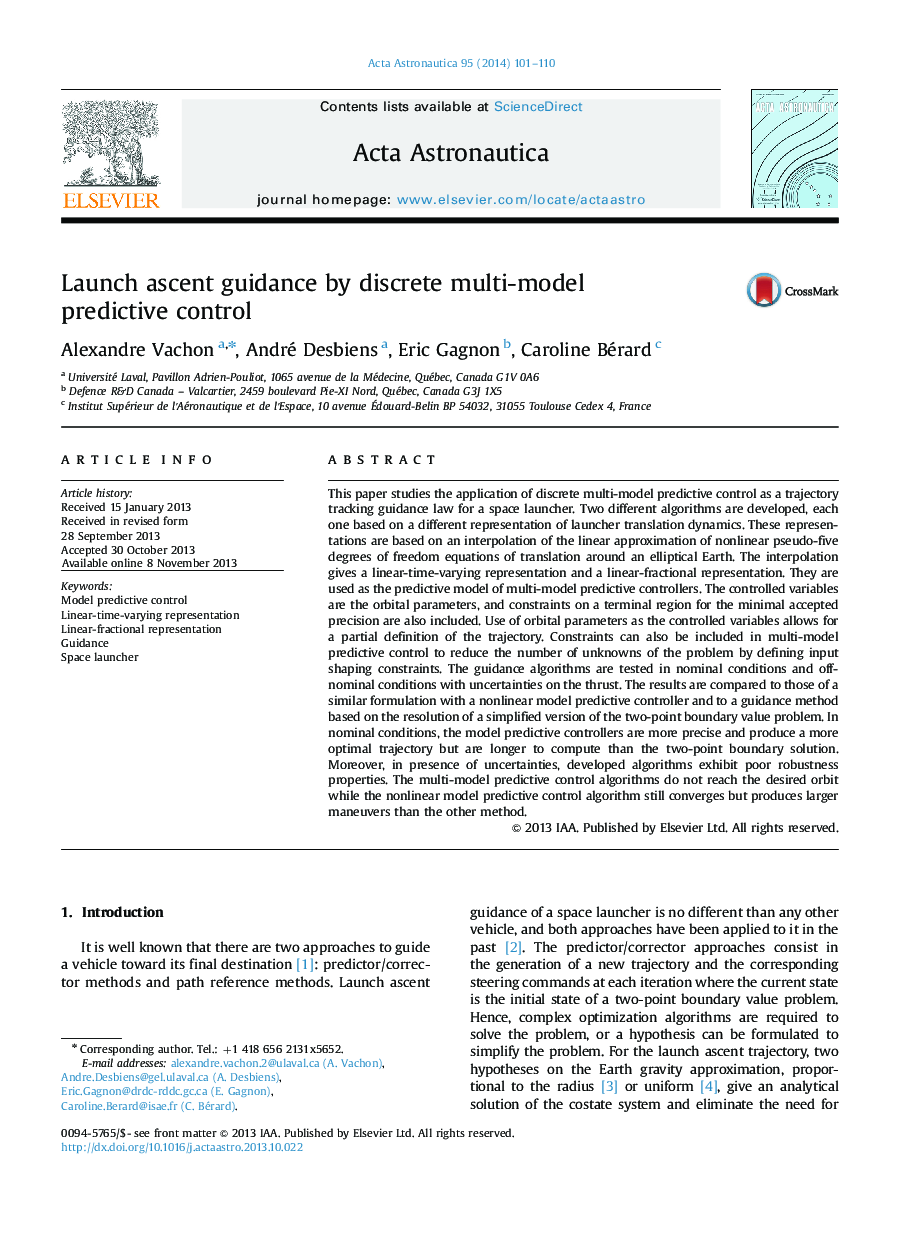| کد مقاله | کد نشریه | سال انتشار | مقاله انگلیسی | نسخه تمام متن |
|---|---|---|---|---|
| 1714679 | 1519957 | 2014 | 10 صفحه PDF | دانلود رایگان |
• Linear fractional representation and linear time varying representation of space launcher translation are developed.
• Launcher guidance problem is converted in a discrete multi-model predictive control.
• Orbital parameters are used to define the tracking trajectory.
• In nominal cases, multi-model predictive control algorithms are more precise but longer to solve.
• In the presence of uncertainties, developed algorithms exhibit poor robustness properties.
This paper studies the application of discrete multi-model predictive control as a trajectory tracking guidance law for a space launcher. Two different algorithms are developed, each one based on a different representation of launcher translation dynamics. These representations are based on an interpolation of the linear approximation of nonlinear pseudo-five degrees of freedom equations of translation around an elliptical Earth. The interpolation gives a linear-time-varying representation and a linear-fractional representation. They are used as the predictive model of multi-model predictive controllers. The controlled variables are the orbital parameters, and constraints on a terminal region for the minimal accepted precision are also included. Use of orbital parameters as the controlled variables allows for a partial definition of the trajectory. Constraints can also be included in multi-model predictive control to reduce the number of unknowns of the problem by defining input shaping constraints. The guidance algorithms are tested in nominal conditions and off-nominal conditions with uncertainties on the thrust. The results are compared to those of a similar formulation with a nonlinear model predictive controller and to a guidance method based on the resolution of a simplified version of the two-point boundary value problem. In nominal conditions, the model predictive controllers are more precise and produce a more optimal trajectory but are longer to compute than the two-point boundary solution. Moreover, in presence of uncertainties, developed algorithms exhibit poor robustness properties. The multi-model predictive control algorithms do not reach the desired orbit while the nonlinear model predictive control algorithm still converges but produces larger maneuvers than the other method.
Journal: Acta Astronautica - Volume 95, February–March 2014, Pages 101–110
